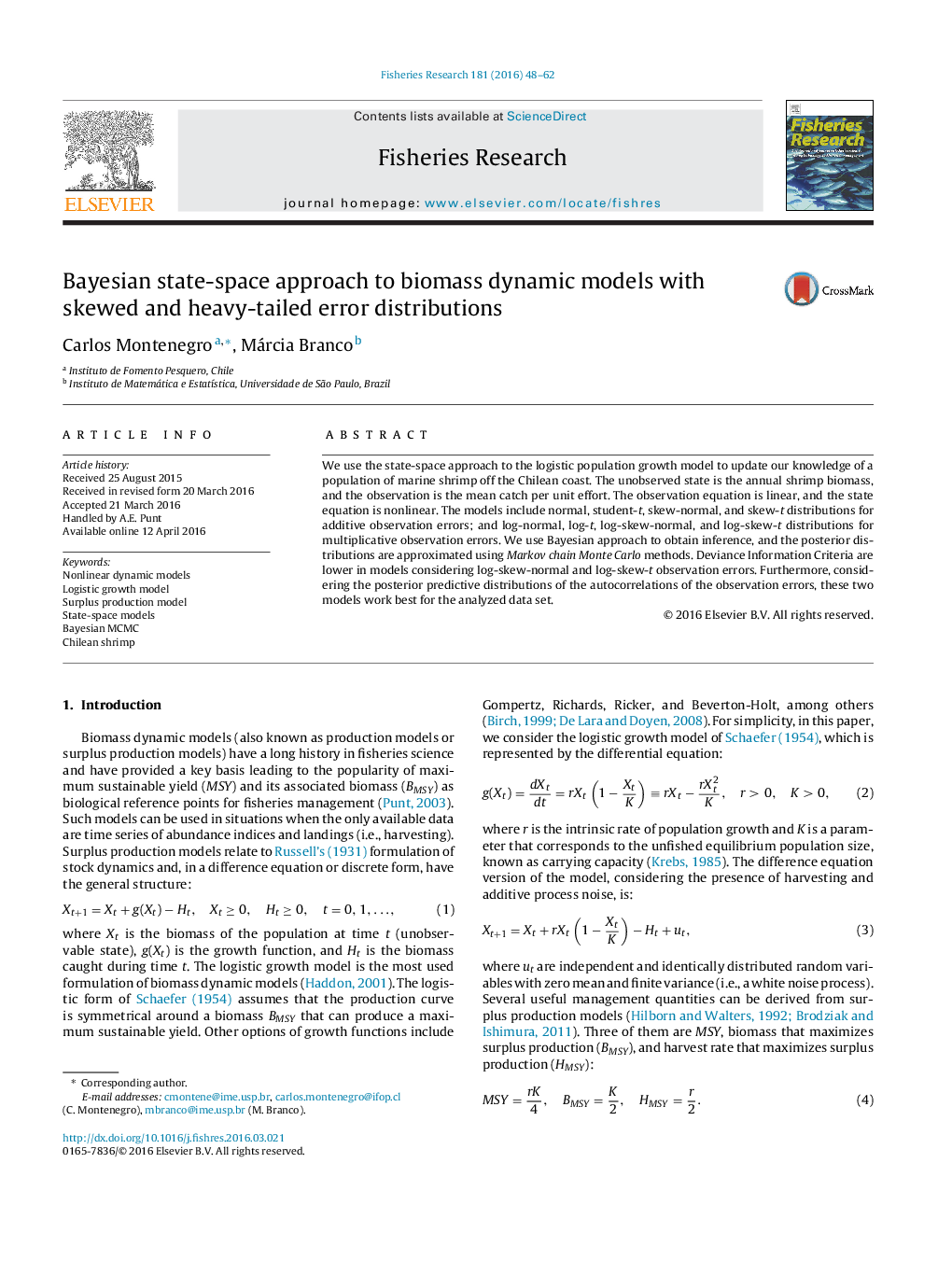| Article ID | Journal | Published Year | Pages | File Type |
|---|---|---|---|---|
| 4542687 | Fisheries Research | 2016 | 15 Pages |
We use the state-space approach to the logistic population growth model to update our knowledge of a population of marine shrimp off the Chilean coast. The unobserved state is the annual shrimp biomass, and the observation is the mean catch per unit effort. The observation equation is linear, and the state equation is nonlinear. The models include normal, student-t, skew-normal, and skew-t distributions for additive observation errors; and log-normal, log-t, log-skew-normal, and log-skew-t distributions for multiplicative observation errors. We use Bayesian approach to obtain inference, and the posterior distributions are approximated using Markov chain Monte Carlo methods. Deviance Information Criteria are lower in models considering log-skew-normal and log-skew-t observation errors. Furthermore, considering the posterior predictive distributions of the autocorrelations of the observation errors, these two models work best for the analyzed data set.
